Blog
Top 5 Best Practices for Machine Learning Projects
Organizations are often conferring on Machine Learning (ML) and Artificial Intelligence (AI) programs to predict the future and strategize risk mitigations to sustain the market pressures.
Details
Compay Name: UCBOS, Inc.
Bio: UCBOS, Inc. is an Atlanta based global technology firm with the mission to provide the world’s first “No-Code Enterprise Application Platform” and revolutionize the notion of the composable enterprise. Its vision is to simplify Automation and AI/ML technologies and make them practical for business, operations, and IT to adapt and transcend coding, industry, and business limitations.
Despite the technology growth and awareness, there is still quite a bit of perplexities around ML projects’ selection, prioritization and ranking of use cases across the industries. This article is an attempt to provide a guideline to identify the most promising use cases for an AI initiative.

#1: Identify Ideal Use Cases for Machine Learning Projects
One can identify ML use cases by studying these resources:
- Review organization revenue, spending patterns and competitors’ competitive advantage
- Examine customer surveys and social media chatter
- Listen in to work force feedbacks, missing KPIs and operational challenges
Use cases are broadly classified into 3 segments. As the digital maturity and AI acceptance headway, organizations will reach the final segment.
- Efficiency & Effectiveness Booster Relatively easy to convince the stake holders and implement as they have existing KPIs, data points and domain owners. Start with several of these use cases and driven them to successful implementations which will pave the way for broader AI acceptance. Use cases of this type may have an overlap with business extender cases. Using AI for Knowledge Management promotes a collaborative and integrative approach and rudimentary in telecom Industry (High Tech & Software) so this use case will be categorized under “Efficiency & Effectiveness” use case. However, in retail industry intending to exceed the customer expectations it can be classified as business extenders.
- Business Extender
Relatively easy for the target audience to accept and implement as they are extensions or enhancements to existing business processes or products. It doesn’t require additional staff or restructuring of departments. Successful rendition of these use cases will boost the confidence and lead to game changing use case implementation.
- Game Changer
Yields greater return but perceived as radical and trend setting new ideas that require more effort and often complex. It involves new business models, new products or new services thus potential to receive greater resistance unless organization culture is to embrace innovation. Game changing use cases demands new departments, staffs and leadership.
#2 Select – Prioritize – Rank Use Cases for Machine Learning Projects
ML Project success factors lies on focusing on delivering a single type of business value, rather than dispersing your attention among various types of value. Such a focus will help deliver a greater impact, and consequently improve visibility to executives.
Selection Process
The goal is to discover use cases that resonate with stakeholders and spark their interest).
Prioritization Process
This exercise will determine the business process domain and business value of each use case. Consider prioritizing business value by domain. As part of this exercise, identify the obvious roadblocks and the technical complexity of the use cases.

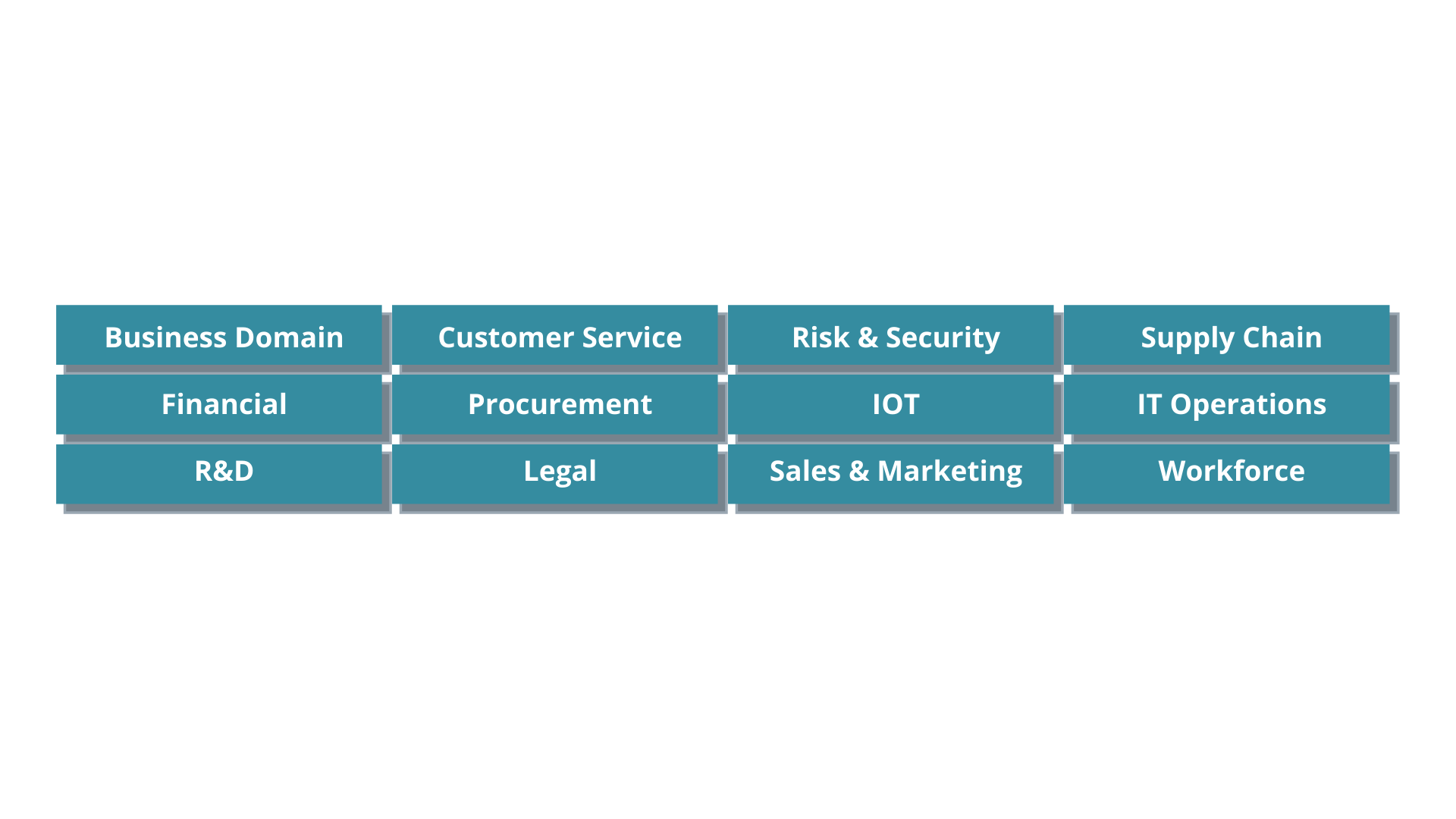
Ranking Process
Put the use cases with the highest business value first, followed by secondary ideas that face major roadblocks or those that involve more technical complexity. Last but not least, consider ranking efficiency booster use cases as high before business extenders and game changers that allows data scientist and developers to gain confidence and experience on the program.
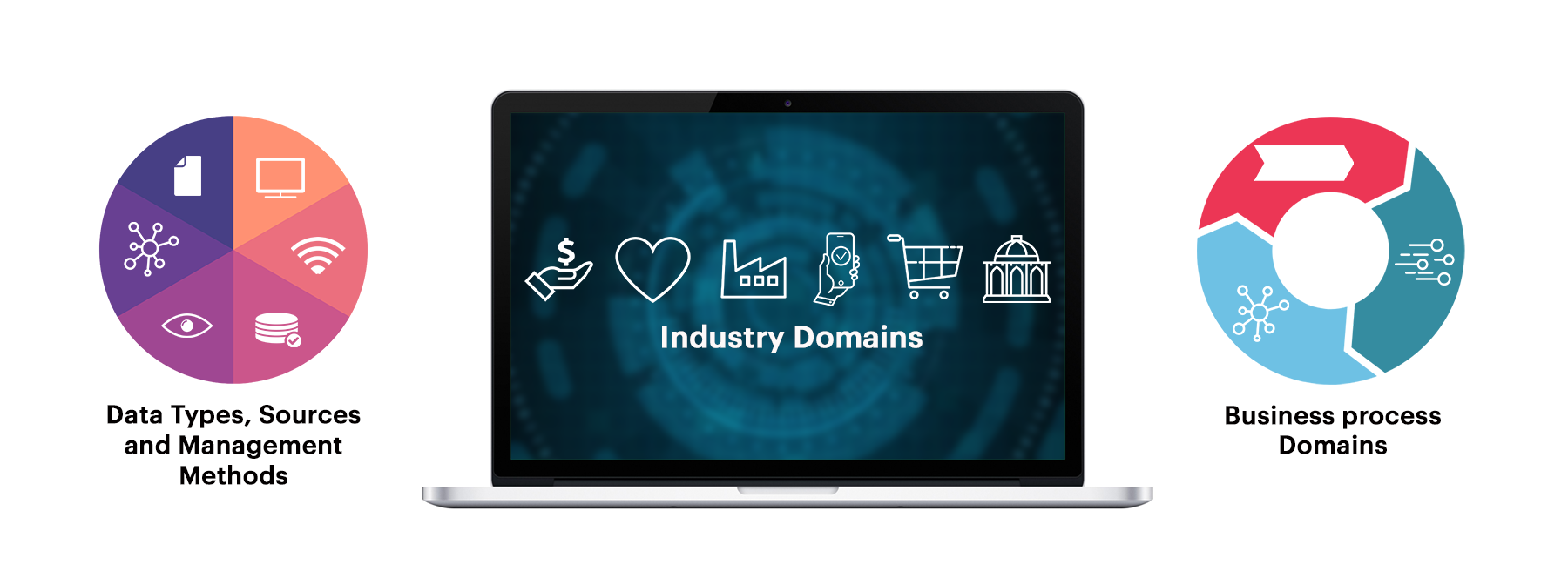
#3 Determine Use Case Impact, Data Sources, AI Methods for Machine Learning Projects
Case Impact
Capturing use case impact is key to securing the budget and dedicated business domain owner as they act as a gate keeper for KPI validations or other tangible success criteria in lack of metrics.
It is not necessarily single use case with huge impact, but it is ideal to prioritize multiple use cases with relatively smaller impact that yields overall impact to a department or domain. E.g. Predictive Staffing use case will aid firms to bring operational efficiency and divert their focus on business transformation programs.
Data Sources
It is quite normal to have disparate structured and unstructured data or not having sufficient data to start with. Consider initiatives around data governance for future needs.
Review all the data sources from privacy, legal, political and ethical lense as there are risks with ML application to result in biased or illegal or unfair decision-making process.
AI/ Methods and Styles:
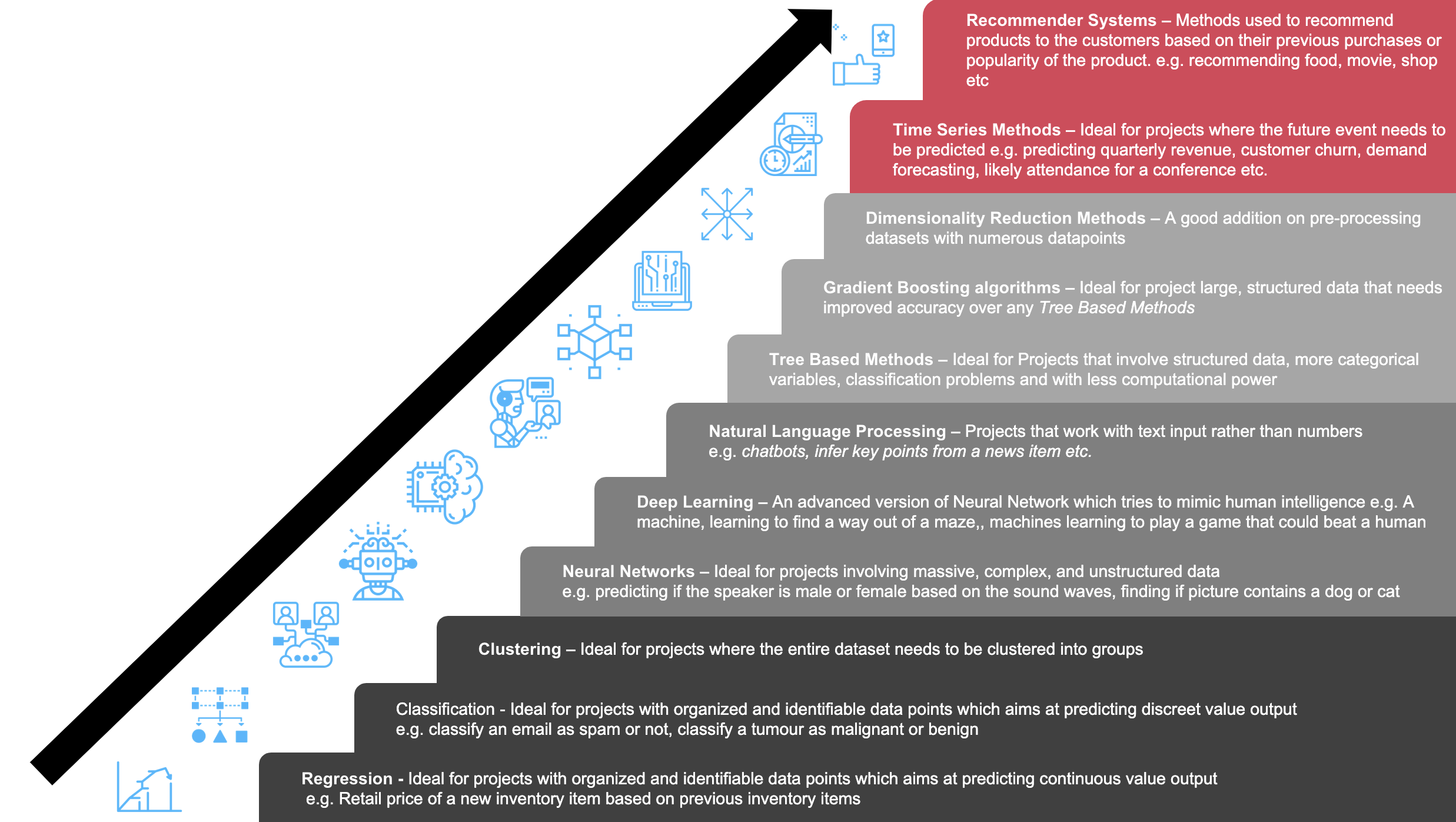
Ideally, two or more methods will be clubbed to form a powerful ML/AI system, the following are few examples.
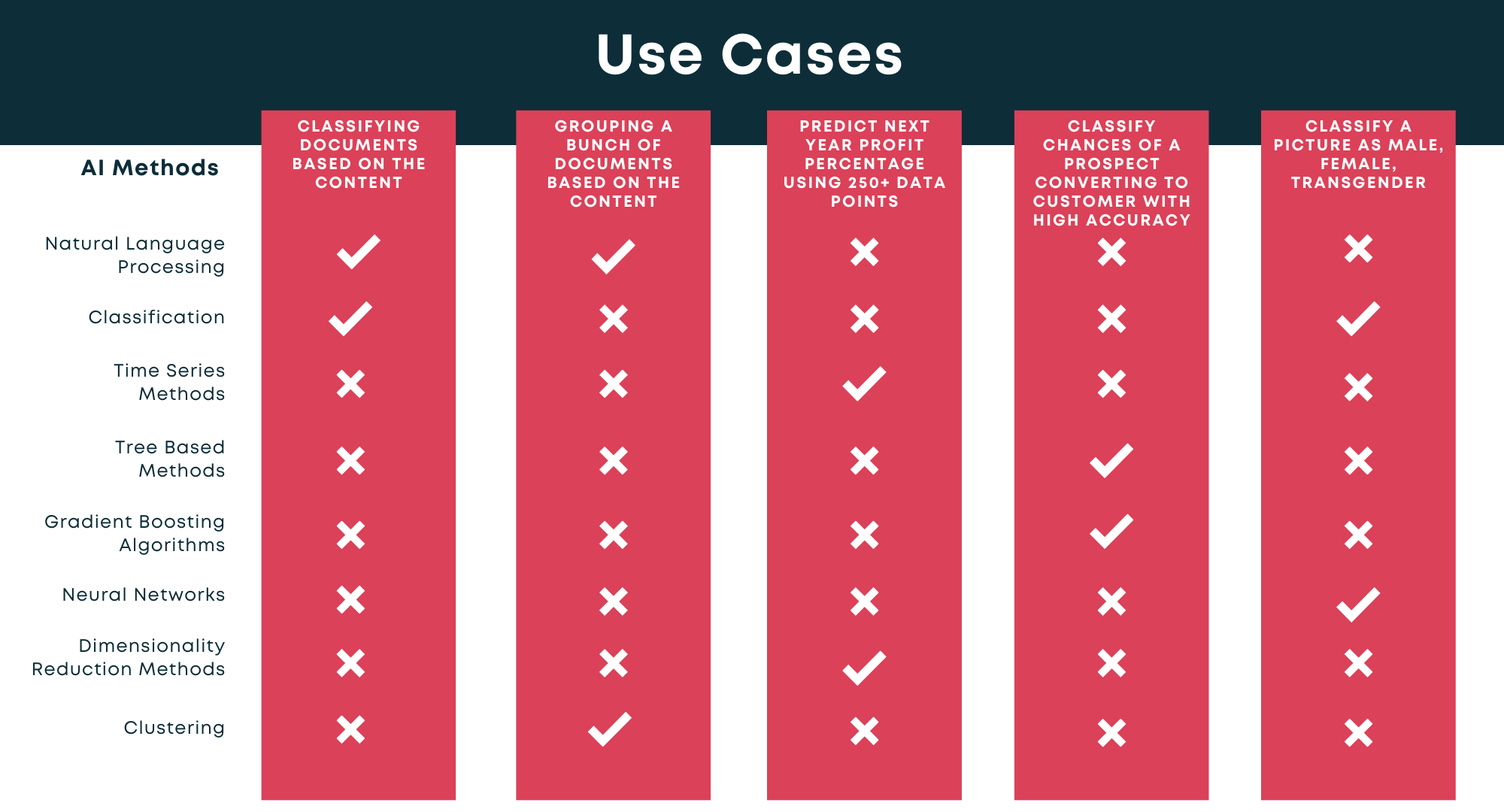
#4 Determine ML Applicability for Machine Learning Projects
It is wise to gauge the applicability and operationalization of the use cases.
Applicability is driven by data readiness, business impact, infrastructure and team members’ skill sets.
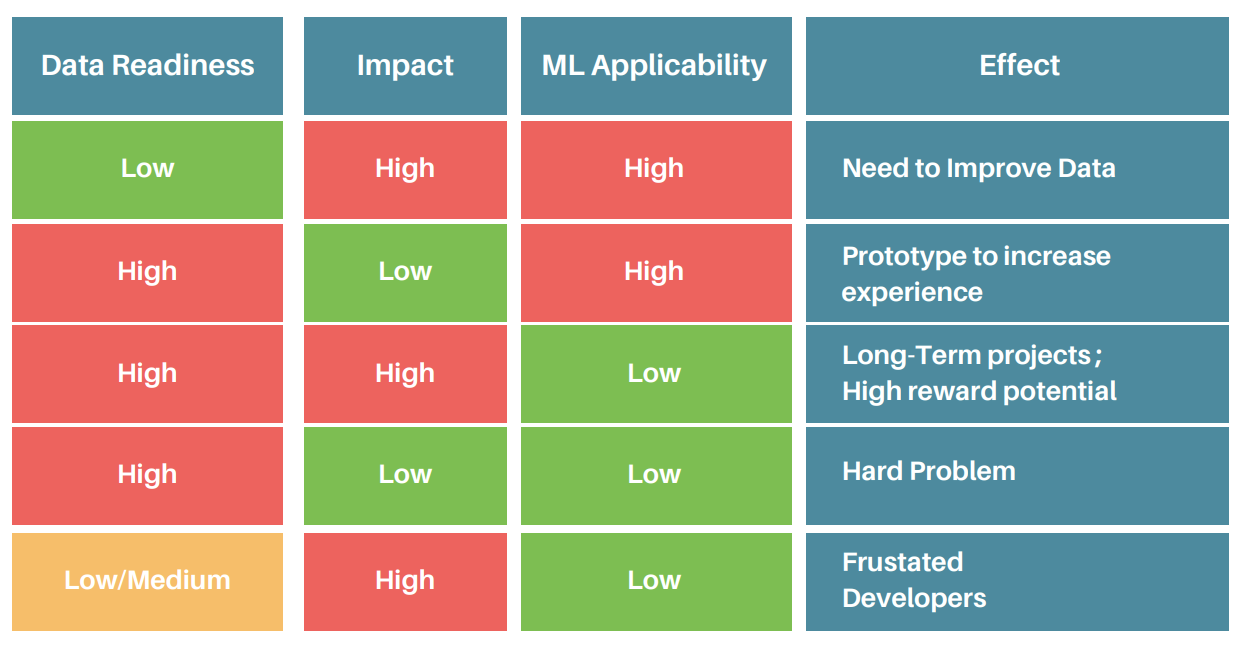
#5 – Make the most out of your Machine Learning Projects
Consider maximizing your efforts by following some of these strategies:
- Consider grouping use cases around common data. It’s a good idea to group use cases as cluster that use the same data, as they will likely involve similar architecture and governance. If some use cases have equal priority, give preference to those with greater spinoff potential across domains.
- Repurpose your semi-supervised programs to validate your supervised and unsupervised programs with minimal changes
- Apply Machine Learning to the plethora of Historical Data lying in the Data warehouse to find hidden patterns that would drive the business
- Improve the efficiency of the existing process using ML that currently works based on coded algorithms
Use the knowledge from yesterday to predict tomorrow, feed the incoming data back to ML to stay on top with the business trends
Here are the top value projects that enterprises are viewing:
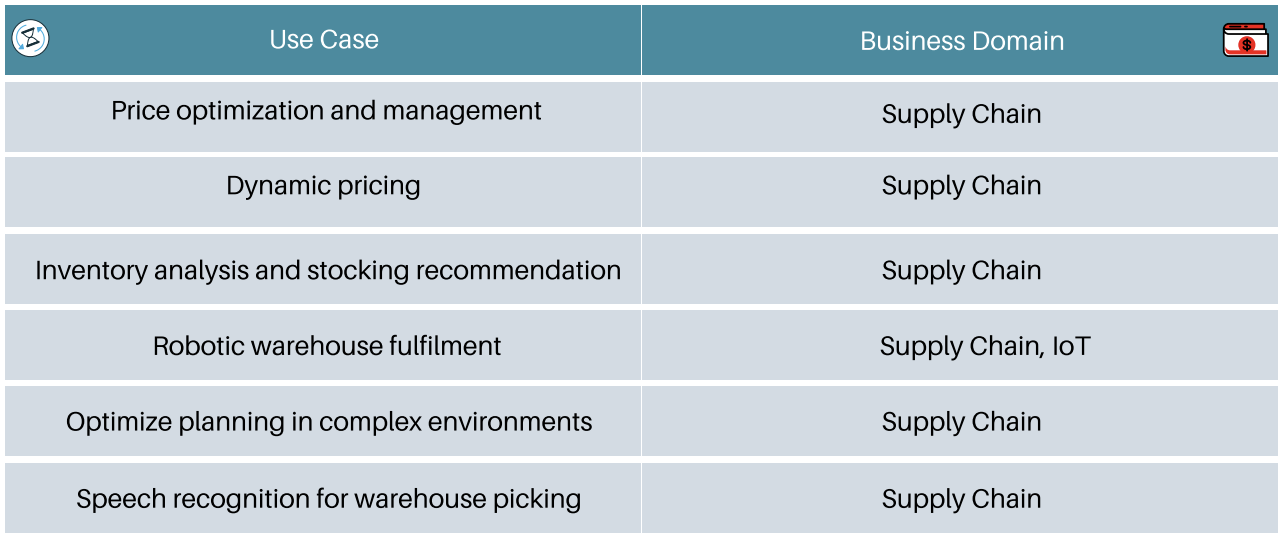
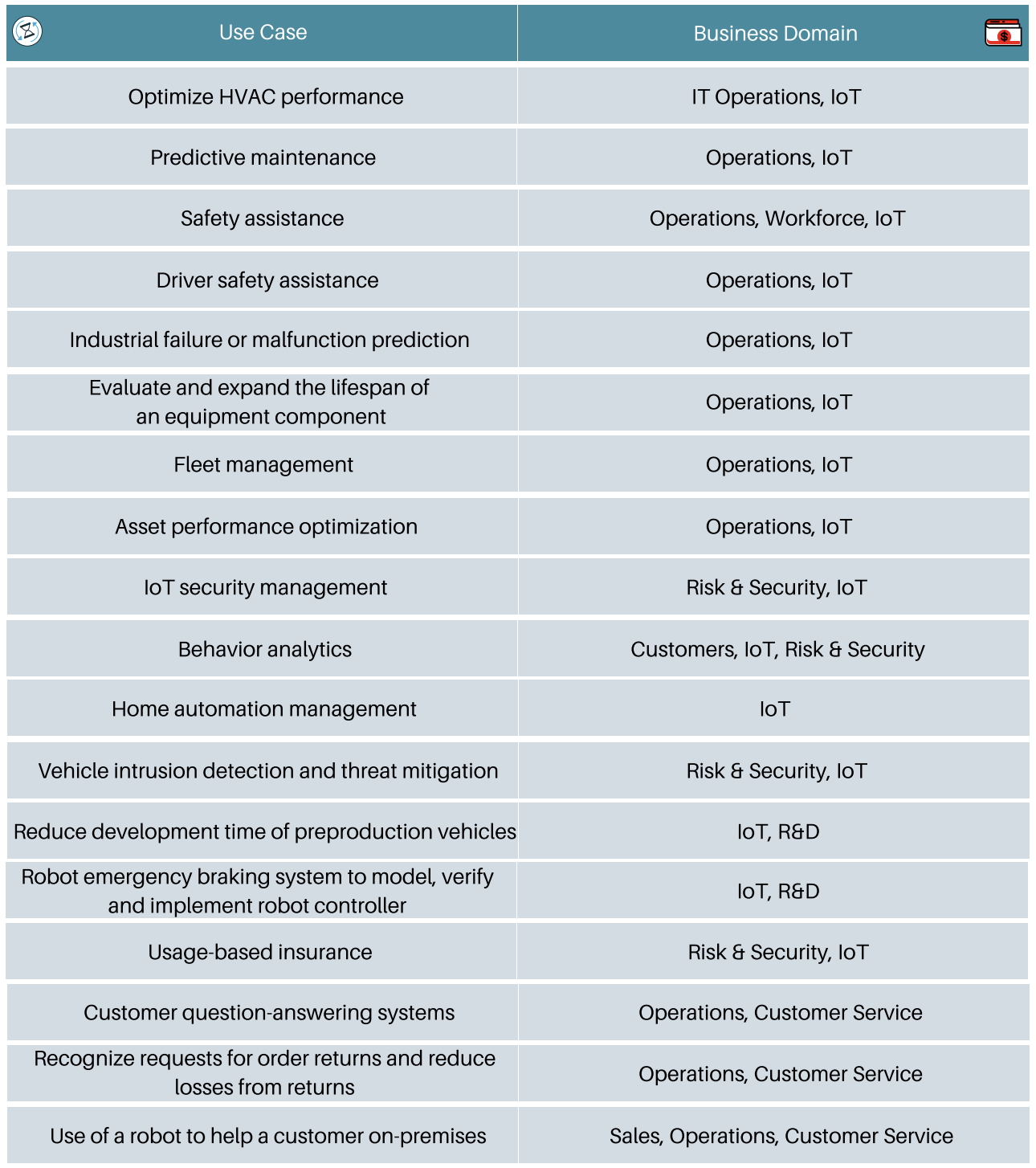
100% No-Code
Unlock new outcomes 10X Faster by extending your Legacy, ERP, and SCM! Don’t rip out anything!